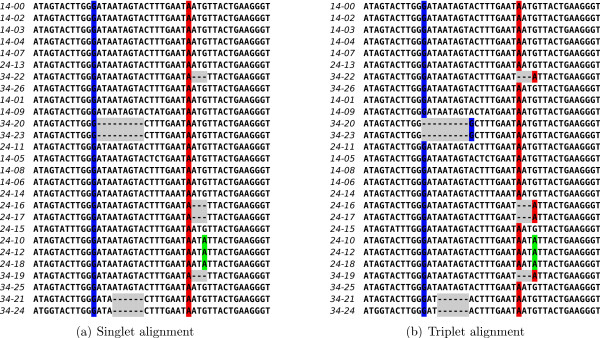Figure 5.

Triplet alignments may shift indels and cause misaligned residues. Triplet alignments may shift indels and cause misaligned residues. (a) Maximum a posteriori (MAP) alignment estimate under the singlet HKY model. (b) MAP alignment estimate under the triplet HKY × 3 model. In the triplet alignment, two G residues (blue) and four A residues (red) are forced into a different column to avoid breaking the alignment-wide reading frame. The displaced A residues join A residues from strains 10, 12, and 18 (green) which were previously the only A residues in that column. Under both models, the MAP alignment estimates display 8 gaps. The alignment of internal sequences (not shown) indicates that these gaps arose from 5 indel events on branches partitioning clades (20,23), (21,24), (16,17), (19), and (22). Thus, the gaps in sequences 19 and 22 arose independently of the gap in (16,17) even though they have the same length and position. Prefixes on sequence names indicate elapsed time in weeks between the initial infection and when the sequences were obtained.
